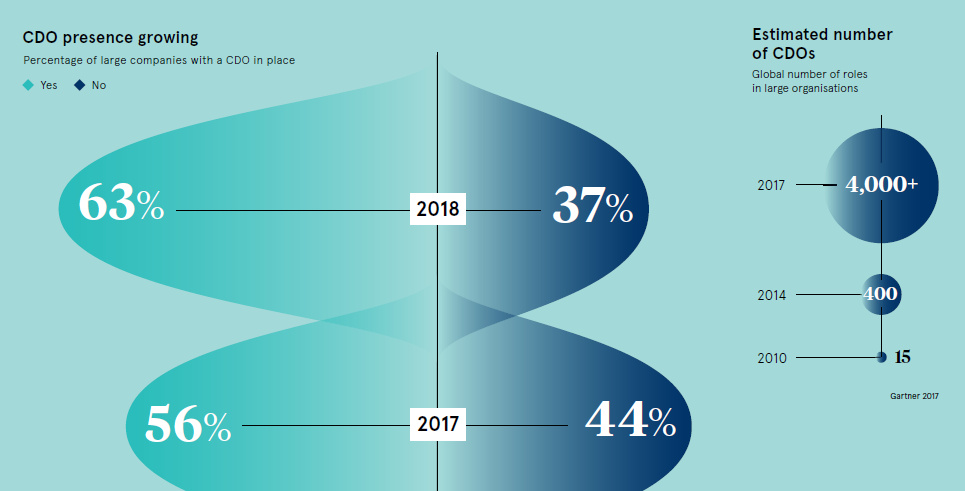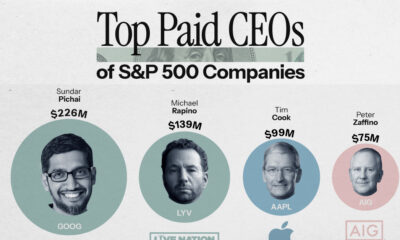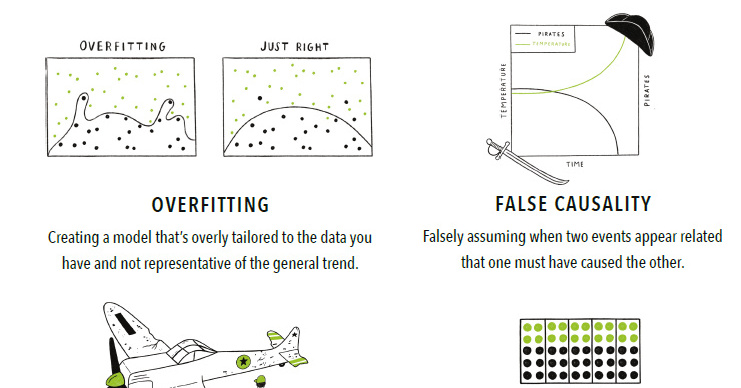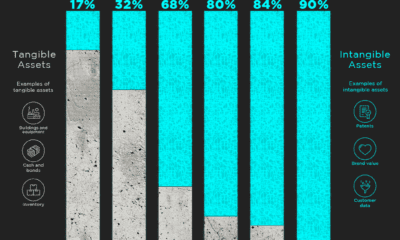Technology
The Rise of the Chief Data Officer (CDO)
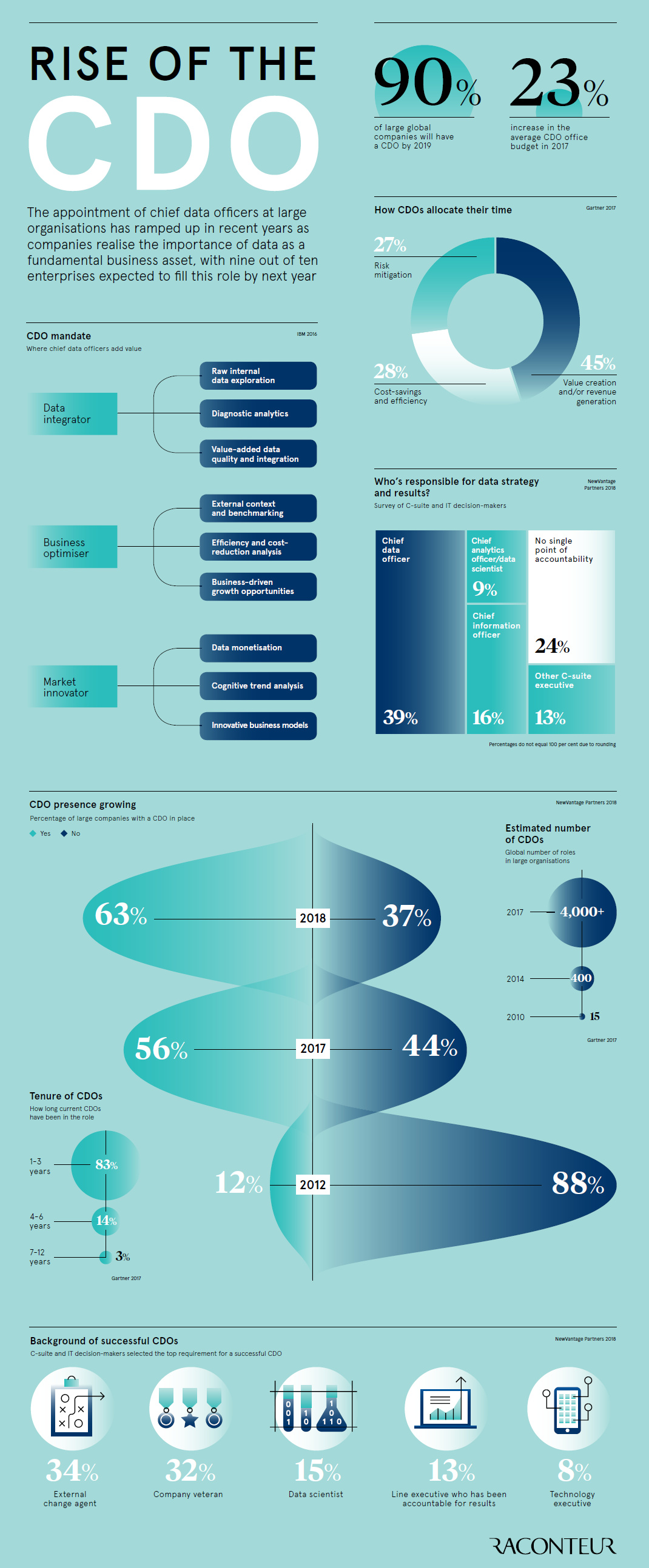
The Rise of the Chief Data Officer (CDO)
Data has taken on a central role in our daily lives, permeating nearly every activity in the business and public sectors. It’s now considered an essential piece of the puzzle for any serious organization, enabling everything from game-changing insights to the birth of entire new technologies or business models.
In fact, data is so important nowadays that some experts are saying that it’s the most valuable resource in the modern economy, even going as far as describing data as the “new oil”. While not everyone agrees with this kind of hyperbole, it’s fair to say that how organizations approach data will be a major determining factor for future growth and success – and thus, having someone to make the most of data is crucial.
To guide these kinds of decisions, many organizations are making a structural change to their C-suite: the addition of a Chief Data Officer (CDO).
The Changing C-Suite
The set of executives that reports to the modern CEO is constantly evolving, and over the last couple of decades we’ve seen the implementation of other tech-focused positions such as the Chief Information Officer (CIO) and the Chief Technology Officer (CTO).
The CDO is the newest addition to the mix, and it’s a job that’s responsible for enterprise wide governance and utilization of information as an asset. This includes oversight over data processing, analysis, data mining, information trading, and other means.
Today’s infographic comes from Raconteur, and it breaks down organizational perspectives on the role of the CDO, along with how execs in this fast-evolving position are allocating their time to achieve their mandates.
The CDO Mandate
Approximately 90% of large global organizations will have a CDO by 2019, and the general mandate for most CDOs will be as follows:
Data Integrator:
Raw internal data exploration, diagnostic analytics, and value-added data quality and integration
Business Optimizer:
External context and benchmarking, cost-reduction analysis, and business-driven growth opportunities
Market Innovator:
Data monetization, cognitive trend analysis, and innovative business models
Meanwhile, Gartner breaks it down in a similar way, suggesting that CDOs spend 45% of their time focused on value creation or revenue generation, 27% on risk mitigation, and 28% on cost savings and efficiency.
Who Makes a Good CDO?
As with any new type of role, there are always questions about how to get someone that is the right fit.
Here is the background of successful CDOs thus far, according to NewVantage Partners:
| Background | Percentage of Successful CDOs |
|---|---|
| External change agent | 34% |
| Company veteran | 32% |
| Data scientist | 15% |
| Results-driving line executive | 13% |
| Technology executive | 8% |
Like the constantly evolving landscape of data itself, the role of CDO will keep changing in the future as more organizations search for new ways to make the most of this precious resource.
Brands
How Tech Logos Have Evolved Over Time
From complete overhauls to more subtle tweaks, these tech logos have had quite a journey. Featuring: Google, Apple, and more.

How Tech Logos Have Evolved Over Time
This was originally posted on our Voronoi app. Download the app for free on iOS or Android and discover incredible data-driven charts from a variety of trusted sources.
One would be hard-pressed to find a company that has never changed its logo. Granted, some brands—like Rolex, IBM, and Coca-Cola—tend to just have more minimalistic updates. But other companies undergo an entire identity change, thus necessitating a full overhaul.
In this graphic, we visualized the evolution of prominent tech companies’ logos over time. All of these brands ranked highly in a Q1 2024 YouGov study of America’s most famous tech brands. The logo changes are sourced from 1000logos.net.
How Many Times Has Google Changed Its Logo?
Google and Facebook share a 98% fame rating according to YouGov. But while Facebook’s rise was captured in The Social Network (2010), Google’s history tends to be a little less lionized in popular culture.
For example, Google was initially called “Backrub” because it analyzed “back links” to understand how important a website was. Since its founding, Google has undergone eight logo changes, finally settling on its current one in 2015.
| Company | Number of Logo Changes |
|---|---|
| 8 | |
| HP | 8 |
| Amazon | 6 |
| Microsoft | 6 |
| Samsung | 6 |
| Apple | 5* |
Note: *Includes color changes. Source: 1000Logos.net
Another fun origin story is Microsoft, which started off as Traf-O-Data, a traffic counter reading company that generated reports for traffic engineers. By 1975, the company was renamed. But it wasn’t until 2012 that Microsoft put the iconic Windows logo—still the most popular desktop operating system—alongside its name.
And then there’s Samsung, which started as a grocery trading store in 1938. Its pivot to electronics started in the 1970s with black and white television sets. For 55 years, the company kept some form of stars from its first logo, until 1993, when the iconic encircled blue Samsung logo debuted.
Finally, Apple’s first logo in 1976 featured Isaac Newton reading under a tree—moments before an apple fell on his head. Two years later, the iconic bitten apple logo would be designed at Steve Jobs’ behest, and it would take another two decades for it to go monochrome.
-

 Travel1 week ago
Travel1 week agoAirline Incidents: How Do Boeing and Airbus Compare?
-

 Markets2 weeks ago
Markets2 weeks agoVisualizing America’s Shortage of Affordable Homes
-

 Green2 weeks ago
Green2 weeks agoRanked: Top Countries by Total Forest Loss Since 2001
-

 Money2 weeks ago
Money2 weeks agoWhere Does One U.S. Tax Dollar Go?
-

 Misc2 weeks ago
Misc2 weeks agoAlmost Every EV Stock is Down After Q1 2024
-

 AI2 weeks ago
AI2 weeks agoThe Stock Performance of U.S. Chipmakers So Far in 2024
-

 Markets2 weeks ago
Markets2 weeks agoCharted: Big Four Market Share by S&P 500 Audits
-

 Real Estate2 weeks ago
Real Estate2 weeks agoRanked: The Most Valuable Housing Markets in America

